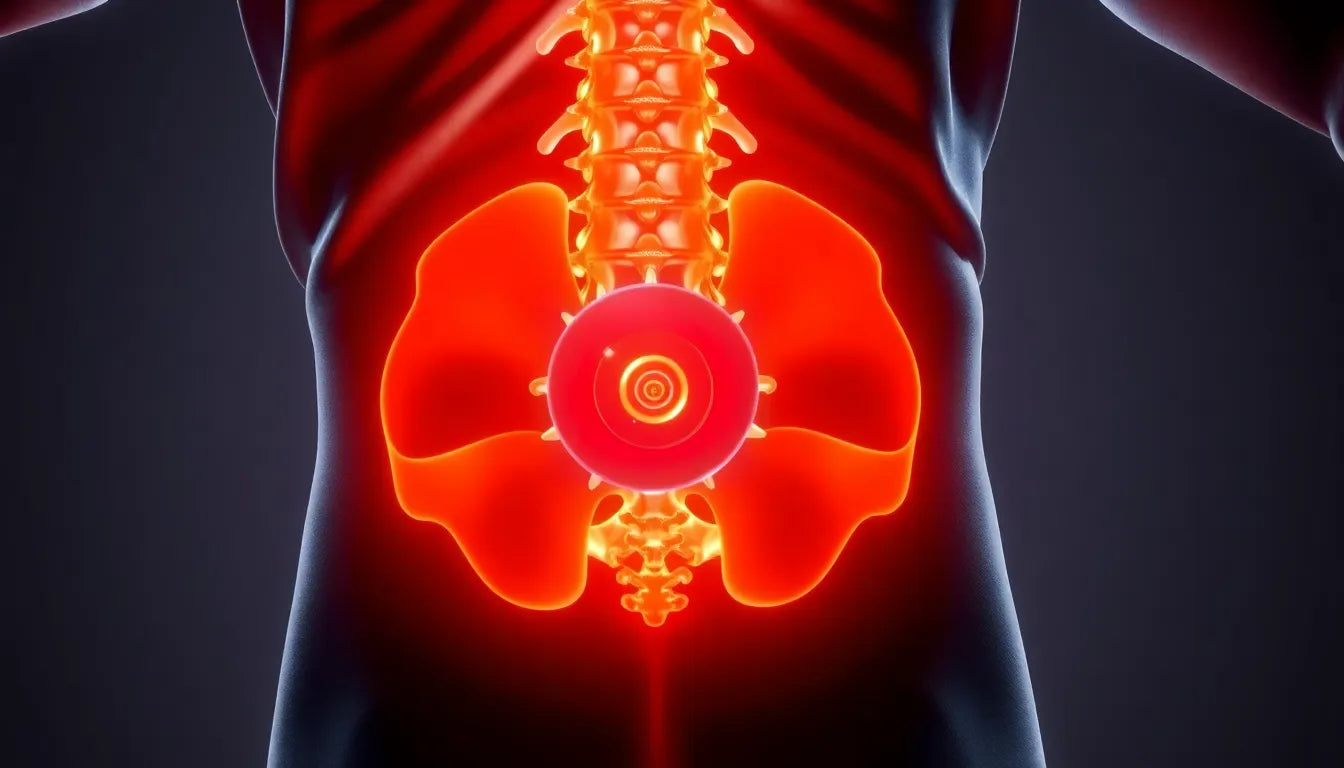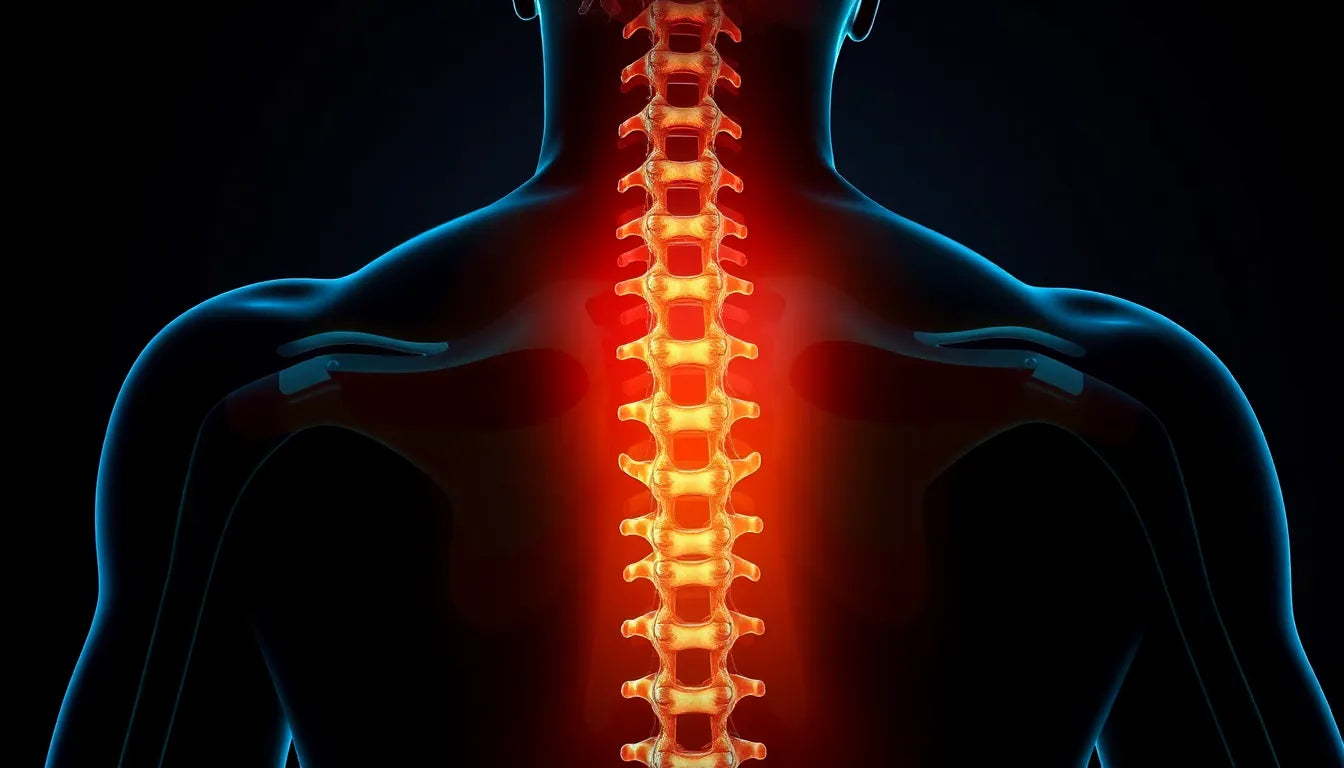Maintaining spinal health is crucial for overall well-being, yet many adults encounter spinal issues that can significantly impact their daily lives. Among these, disc-related problems are quite common, often manifesting as either a herniated or bulging disc. Understanding the role of spinal discs is essential to grasping these conditions. These discs act as cushions between the vertebrae, facilitating movement and absorbing shock. However, as we age, these discs can undergo changes that lead to discomfort and health issues.
Disc-related problems are prevalent, affecting a significant portion of the adult population. It's not uncommon for individuals to experience back pain at some point in their lives, with disc issues often being a contributing factor. Despite their frequency, there's a lot of confusion surrounding the differences between a herniated and a bulging disc, primarily due to their overlapping symptoms. This confusion can make it challenging for individuals to understand their condition and seek appropriate treatment.
Understanding the difference between herniated and bulging discs
In this post, we aim to clarify the differences between herniated and bulging discs to enhance awareness and aid in better management of these conditions. While both conditions involve the spinal discs, their nature and implications differ significantly. A bulging disc occurs when the outer layer of the disc protrudes outward but remains intact, often without causing symptoms. This condition is frequently a natural part of the aging process.
Conversely, a herniated disc is more severe, involving a rupture in the disc's outer ring, allowing the inner nucleus to leak out. This leakage can compress nearby nerves, leading to more pronounced symptoms such as pain, numbness, or tingling. Understanding these distinctions is vital for recognizing the severity of symptoms and determining the appropriate course of action.
By shedding light on these conditions, we hope to dispel common misconceptions and provide readers with the knowledge needed to make informed decisions about their spinal health. Recognizing the signs and understanding the differences can empower individuals to seek timely medical advice and adopt preventive measures to maintain a healthy spine.
Detailed definitions and comparisons
To truly understand the difference between herniated and bulging discs, it's essential to delve into their anatomical and physiological distinctions. A bulging disc occurs when the disc's outer layer, known as the annulus fibrosus, protrudes outward without rupturing. Imagine a jelly donut where the dough is slightly bulging but hasn't broken, keeping the jelly securely inside. This condition is often a natural part of aging and may not cause symptoms unless the protrusion begins to press on surrounding nerves.
In contrast, a herniated disc involves a rupture or tear in the outer ring, allowing the inner nucleus pulposus to leak out. This can be likened to the jelly donut analogy where the dough has torn, and the jelly oozes out. This leakage can directly impinge on spinal nerves, leading to more severe and immediate symptoms. The potential for nerve compression makes herniated discs more likely to cause significant pain, numbness, tingling, or even weakness in the limbs.
Symptoms and diagnostic approaches
Both herniated and bulging discs can cause a variety of symptoms, primarily related to nerve compression. Common symptoms include back pain, leg pain, numbness, tingling, and muscle weakness. However, herniated discs are more prone to result in pronounced or debilitating symptoms due to the direct pressure on nerves. In severe cases, herniated discs can lead to loss of bowel or bladder control, which constitutes a medical emergency.
Accurate diagnosis is crucial for distinguishing between these two conditions. MRI scans are the gold standard for visualizing disc abnormalities and determining the extent of nerve involvement. While symptoms provide initial clues, imaging is essential to confirm the diagnosis and guide treatment. A comparative table of symptoms and diagnostic criteria can enhance clarity:
| Condition | Symptoms | Diagnosis |
|---|---|---|
| Bulging Disc | Often asymptomatic; possible mild pain or discomfort | Detected via MRI; protrusion without rupture |
| Herniated Disc | Severe pain, numbness, tingling, weakness | Confirmed by MRI; rupture and nucleus leakage |
Causes and risk factors
The development of both herniated and bulging discs can be attributed to several factors. Age-related degeneration is a primary cause, as discs naturally lose hydration and elasticity over time. Injuries, whether from sudden trauma or repetitive strain, can also contribute to disc issues. Lifestyle factors, such as poor posture and improper lifting techniques, further exacerbate the risk.
To mitigate these risks, adopting preventive measures is key. Ergonomic aids, such as supportive chairs and lumbar cushions, can help maintain proper spinal alignment. Practicing safe lifting techniques, engaging in regular exercise to strengthen core muscles, and maintaining a healthy weight are also vital strategies in preventing disc-related problems.
Understanding the causes and risk factors of herniated and bulging discs empowers individuals to take proactive steps in preserving their spinal health. By recognizing the signs and seeking timely medical advice, one can effectively manage these conditions and reduce the likelihood of severe complications.
Management and treatment options for spinal disc conditions
When it comes to managing herniated and bulging discs, a range of treatment options is available, often starting with non-surgical methods. Physical therapy is commonly recommended to strengthen the muscles around the spine, improve flexibility, and reduce pain. Pain management can include medications such as anti-inflammatories, muscle relaxants, or corticosteroid injections to alleviate discomfort and inflammation.
In cases where non-surgical treatments are ineffective or symptoms are severe, surgical intervention may be necessary. Surgery aims to relieve nerve pressure by removing or repairing the damaged portion of the disc. It is crucial to consult with a healthcare professional to determine the best treatment plan based on individual symptoms and overall health.
Proactive spinal health management
Understanding the differences between herniated and bulging discs is vital for proactive health management. Lifestyle changes can play a significant role in preventing or managing symptoms. Incorporating ergonomic aids, such as adjustable chairs and supportive back cushions, can help maintain proper posture and reduce strain on the spine.
Regular exercise, focusing on core strengthening and flexibility, is also essential in maintaining spinal health. Activities like yoga and pilates can enhance posture and support the spine's natural alignment. Additionally, maintaining a healthy weight reduces stress on the spine, decreasing the risk of disc issues.
Frequently asked questions
What is the main difference between a herniated and a bulging disc?
The main difference lies in the disc's condition: a bulging disc involves the outer layer protruding without rupture, while a herniated disc features a rupture in the outer ring, allowing the inner nucleus to leak out. This leakage can press on nerves, often causing more severe symptoms.
Can a bulging disc become herniated?
Yes, a bulging disc can progress to a herniated disc if the outer layer weakens further, leading to a rupture. Factors such as continued stress, injury, or degeneration can contribute to this progression.
How are these conditions diagnosed?
Diagnosis typically involves a combination of clinical evaluation and imaging tests. MRI scans are the gold standard for visualizing disc abnormalities and confirming whether a disc is bulging or herniated.
Are herniated discs always painful?
No, herniated discs do not always cause pain. Symptoms vary depending on the extent of nerve compression. Some individuals may experience severe pain, while others might have no symptoms at all.
When should I see a doctor for back pain?
It is advisable to see a doctor if back pain persists for more than a few weeks, is severe, or is accompanied by symptoms such as numbness, tingling, weakness, or loss of bladder or bowel control. Early diagnosis and intervention can prevent further complications.
Conclusion
Understanding the differences between herniated and bulging discs is crucial for effective management and prevention. By recognizing symptoms and risk factors, individuals can seek appropriate medical advice and adopt lifestyle changes to maintain spinal health. Professional diagnosis and treatment planning are essential for addressing these conditions and ensuring long-term well-being.
Sources
- Penn Medicine. "Bulging vs. Herniated Disc: What's the Difference?"
- ADRSpine. "Herniated Disc vs. Bulging Disc: Understanding the Differences."
- Cleveland Clinic. "Herniated Disk: Symptoms, Causes, and Treatments."
- Miami Neuroscience Center. "Difference Between Herniated and Bulging Disc."
- Neurosurgeons of New Jersey. "Herniated Disc vs. Bulging Disc: What You Need to Know."
- Long Island Brain & Spine. "Bulging Disc vs. Herniated Disc: Key Differences."
- Neurosurgery One. "Herniated Disc vs. Bulging Disc: How to Tell the Difference."



